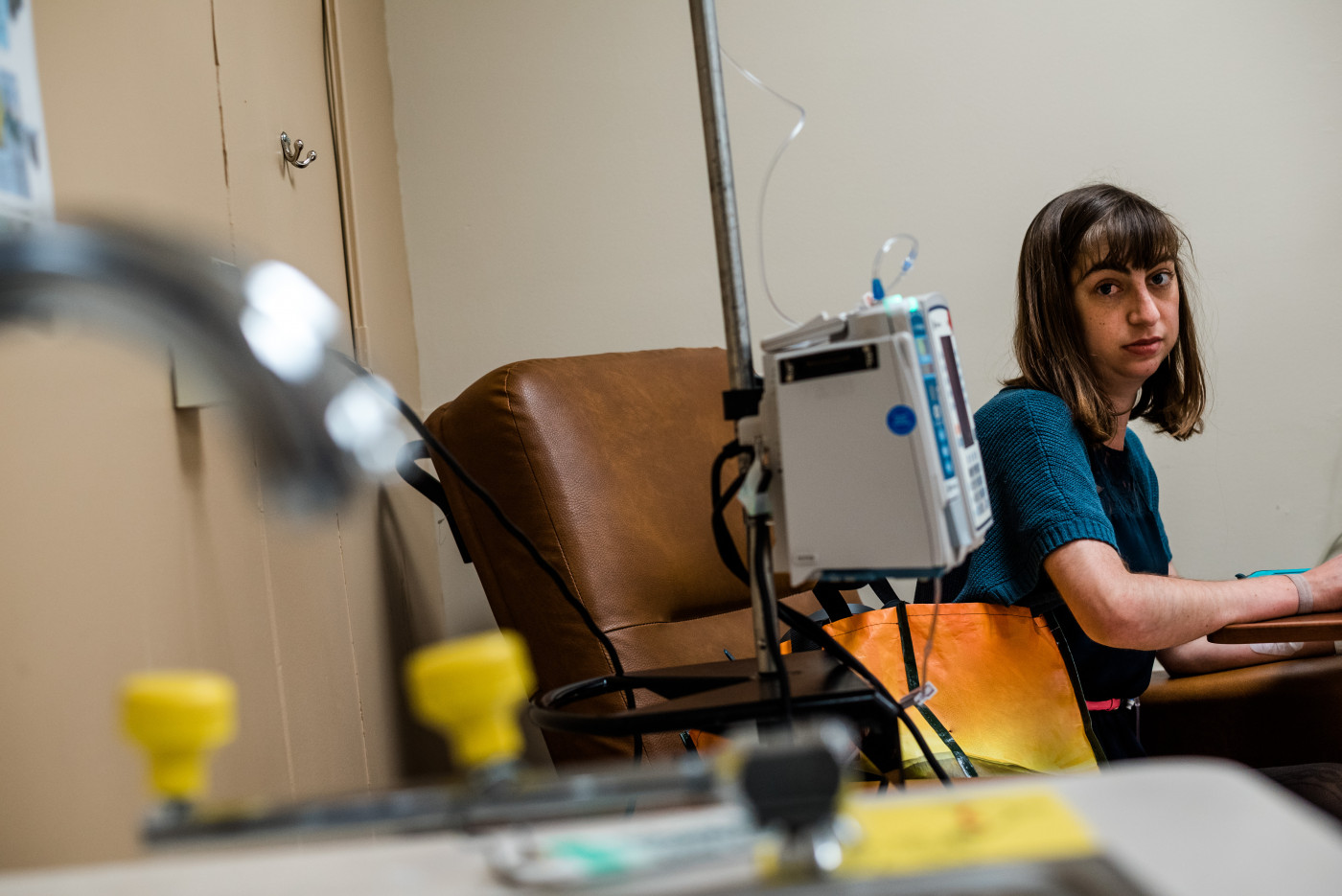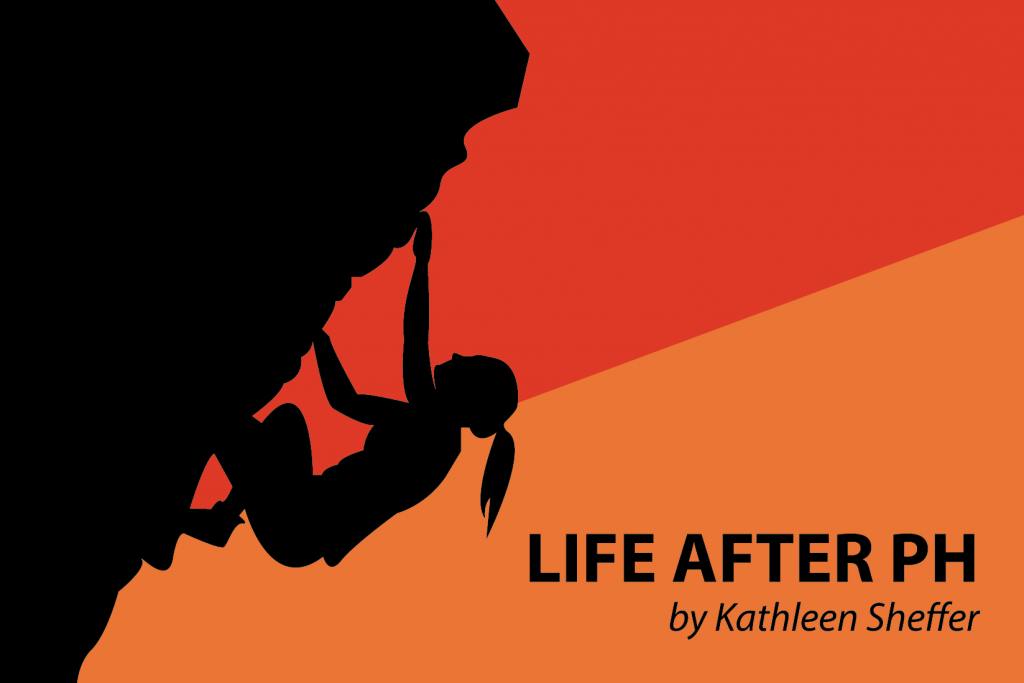Prepared for the Worst

(Photo by Kathleen Sheffer)
On early morning drives to Stanford Medical Center, I blast upbeat songs and belt out inaccurate lyrics, my shih tzu giving confused looks from the passenger seat. I’m waking my lungs up in preparation for a 7:30 a.m. pulmonary function test (PFT).
My lung transplant clinic performs PFTs every visit to monitor infection and rejection. Forced expiratory volume (FEV) measures the amount of air exhaled in a forced breath. Among other measurements, the PFT calculates the total volume of air expelled in one second, or FEV1. I pay the closest attention to what percentage of normal (for my gender, height, weight, etc.) my FEV1 is.
When my FEV1 dropped from 92 percent to 85 percent back in May 2017, it signaled a bout of acute rejection. I figured the technician made an error because I had hiked 8 miles the week before! A bronchoscopy confirmed A2 organ rejection and I started a three-day course of IV Solu-Medrol, aka “Mega-Prednisone,” a high dose of steroids that gave me brain fog and mood swings for weeks.
What scared me most was that I didn’t see it coming. As always, I had been taking all my medications exactly as prescribed, I hadn’t been sick, and I was feeling on top of my game — I was on my way to go rock climbing when my nurse called with the diagnosis (I still went climbing).
Before the holidays, I was working assiduously at my freelance photography business, looking forward to a week of vacation and family time. In fact, the holidays turned out to be fairly laborious, and I never really do stop taking photos. I returned to a heavy work schedule that makes finding time to write this column harder than I’d like it to be.
When I went into the clinic last Friday, I was ready to resolve a month’s worth of anxiety. When I lagged behind my sister on a hike after several nights without enough sleep, I worried I had rejection. Whenever I felt tired at the end of a day, I worried I had rejection. When I slept in past 10 a.m. one morning, I became convinced I had rejection.
My boyfriend tries to tell me healthy people get tired, too. That just because I have a new heart and lungs, doesn’t mean I can suddenly do all the things: “More spoons doesn’t mean infinity spoons,” he says. I’m not entirely convinced.
Pulmonary hypertension taught me to plan for the worst and hope for the best. I had to be ready to drop everything if my pump malfunctioned or I spiked a fever. Over the years, I accrued an inordinate number of absences from school (not a good thing in my book), had to cancel several trips, and although I was not exactly brimming over with the hottest invites, I missed out on a fair amount of parties.
So, by the time I was standing in line on Friday morning waiting for the clinic doors to open, I’d had ample time to think through every photography job I was going to have to cancel when they inevitably diagnosed my rejection. I’d already considered breaking up with my boyfriend and planned out a trip to a remote area where I could be alone with my racing thoughts and irrational tears.
Remember when I wrote about getting my anxiety under control? Maybe I’m not all the way there yet.
I bathed in waves of relief when the technician read off 91 percent and then 92 percent. “Stable PFTs,” my doctor confirmed. “I told you so,” my friends texted back.
The novelty of appointments without signs of decline has not worn off. For the next couple months between PFTs, I will at least try not to be on high alert for every sign that something might be wrong. Old habits die hard, though, and it seems I am still much more accustomed to life with PH than I am to life with organ transplants. Having experienced sickness as devastating as PH, I don’t think I will ever stop worrying I will lose my new health in an instant.
***
Note: Pulmonary Hypertension News is strictly a news and information website about the disease. It does not provide medical advice, diagnosis, or treatment. This content is not intended to be a substitute for professional medical advice, diagnosis, or treatment. Always seek the advice of your physician or other qualified health provider with any questions you may have regarding a medical condition. Never disregard professional medical advice or delay in seeking it because of something you have read on this website. The opinions expressed in this column are not those of Pulmonary Hypertension News or its parent company, Bionews Services, and are intended to spark discussion about issues pertaining to pulmonary hypertension.









Leave a comment
Fill in the required fields to post. Your email address will not be published.